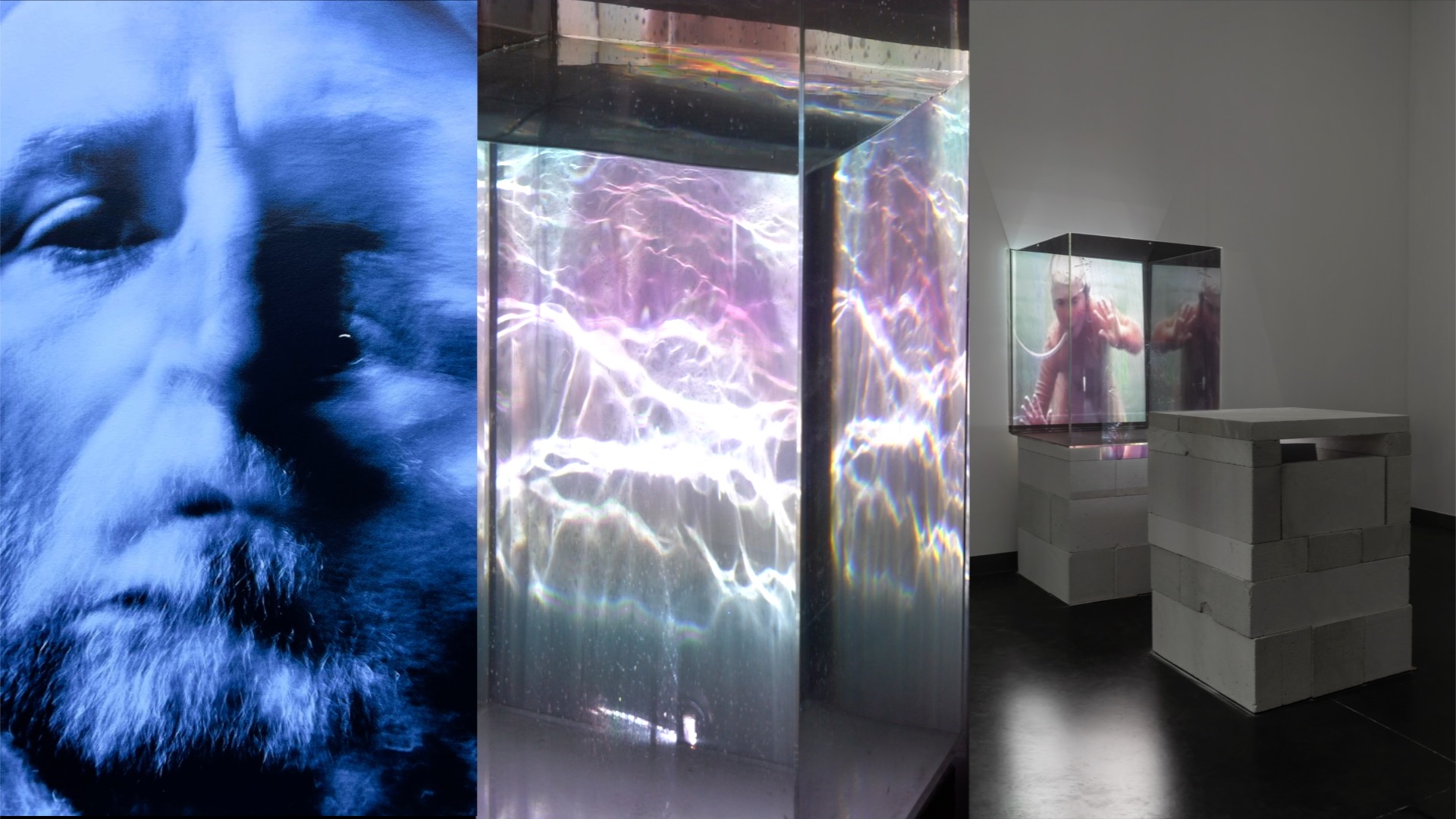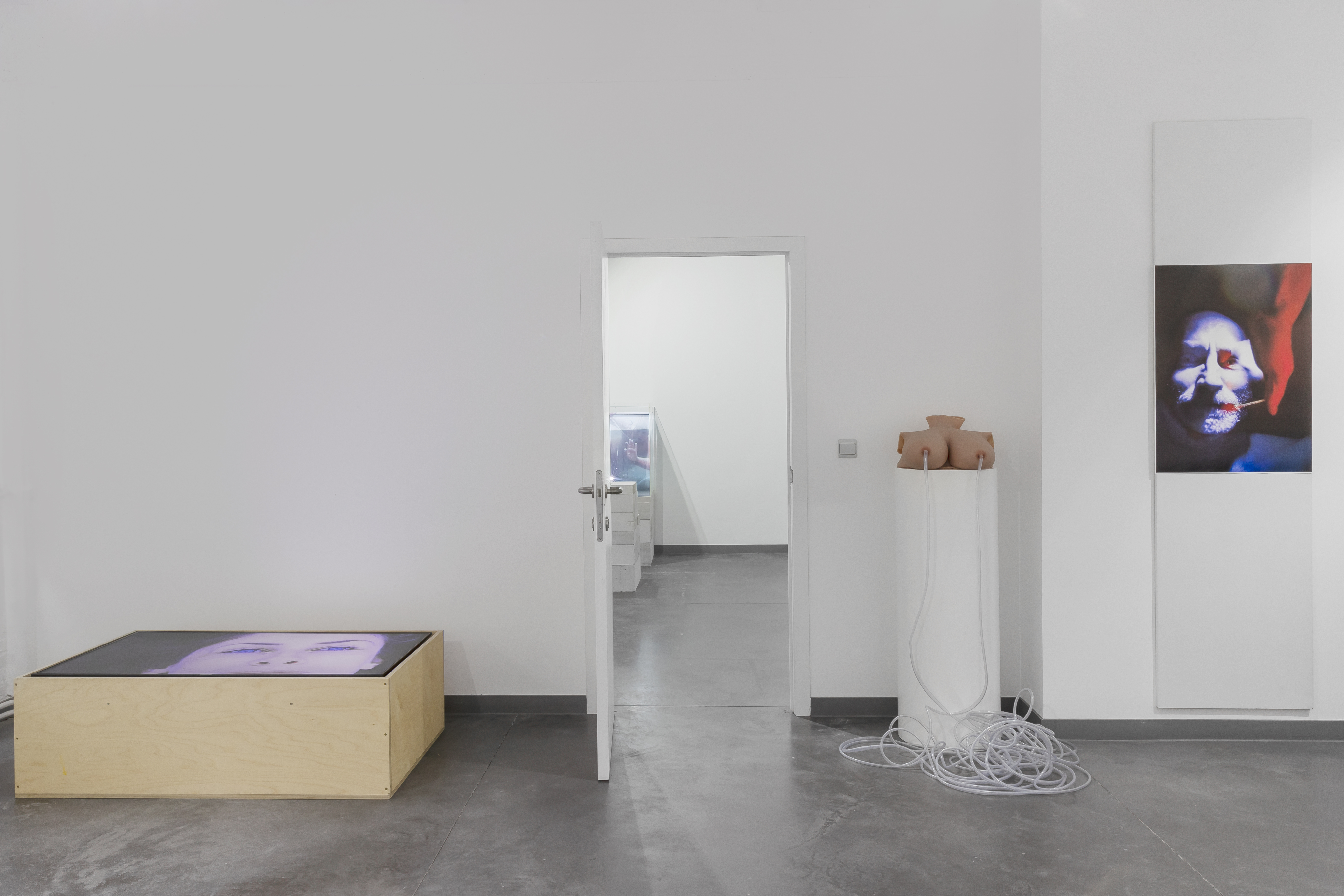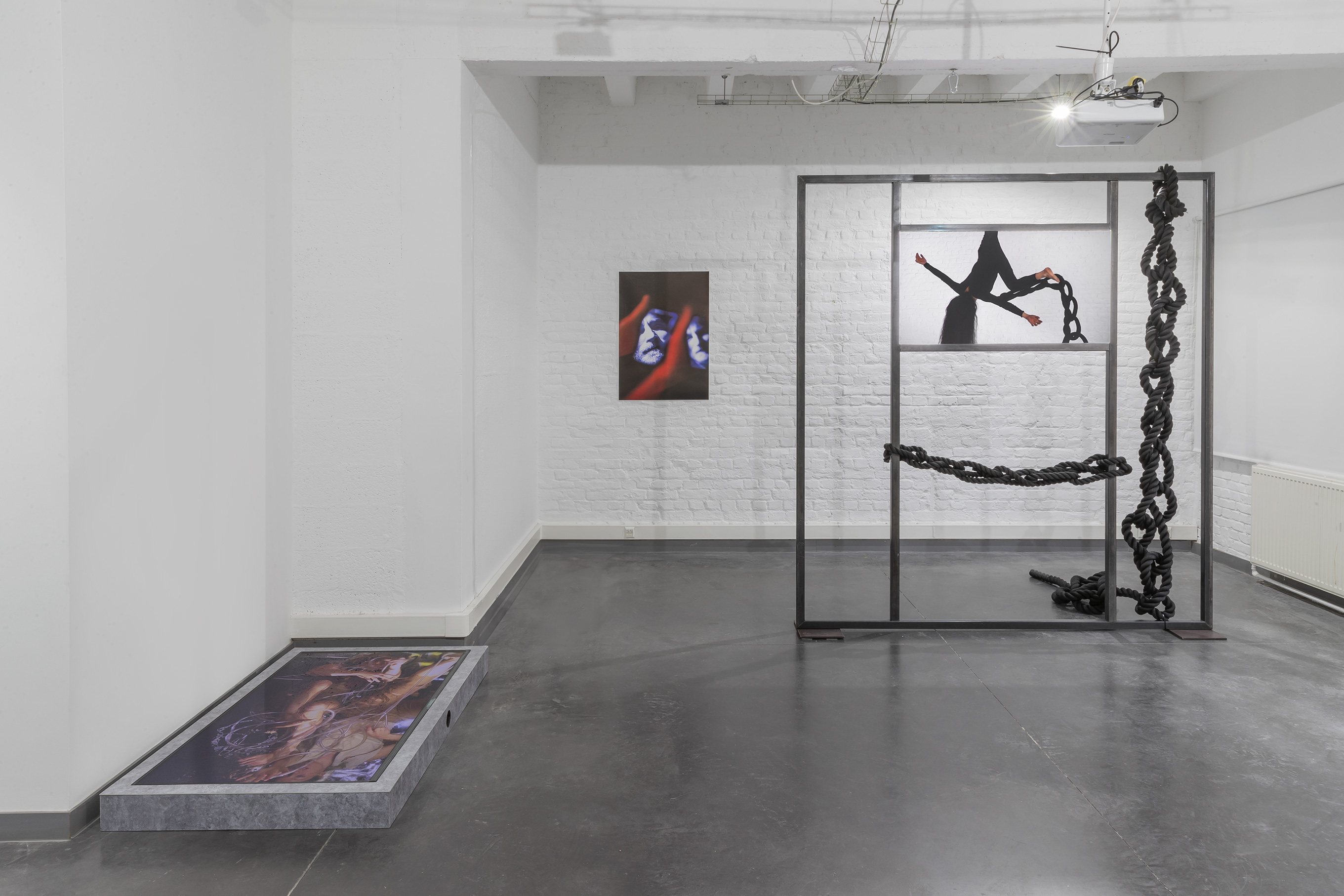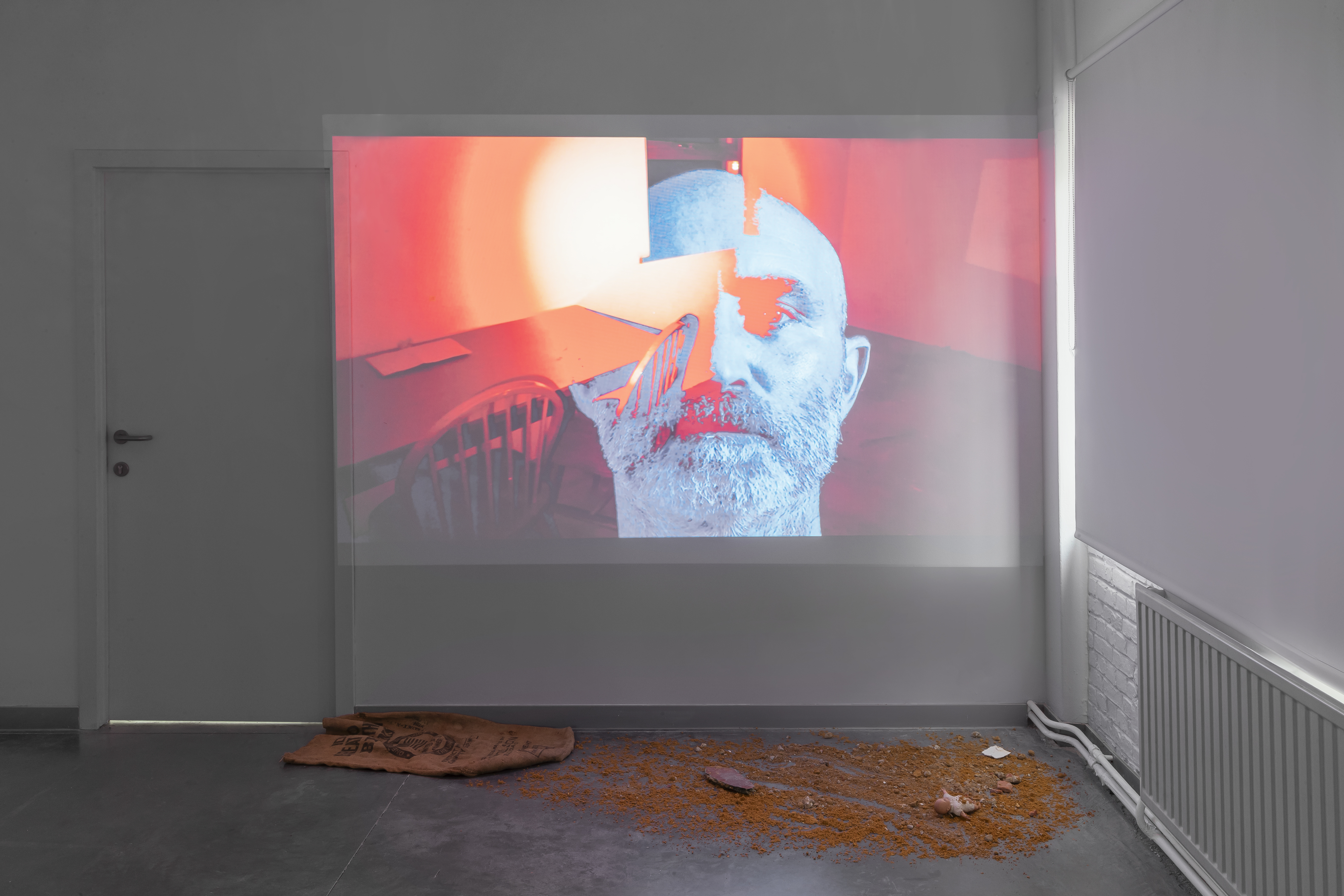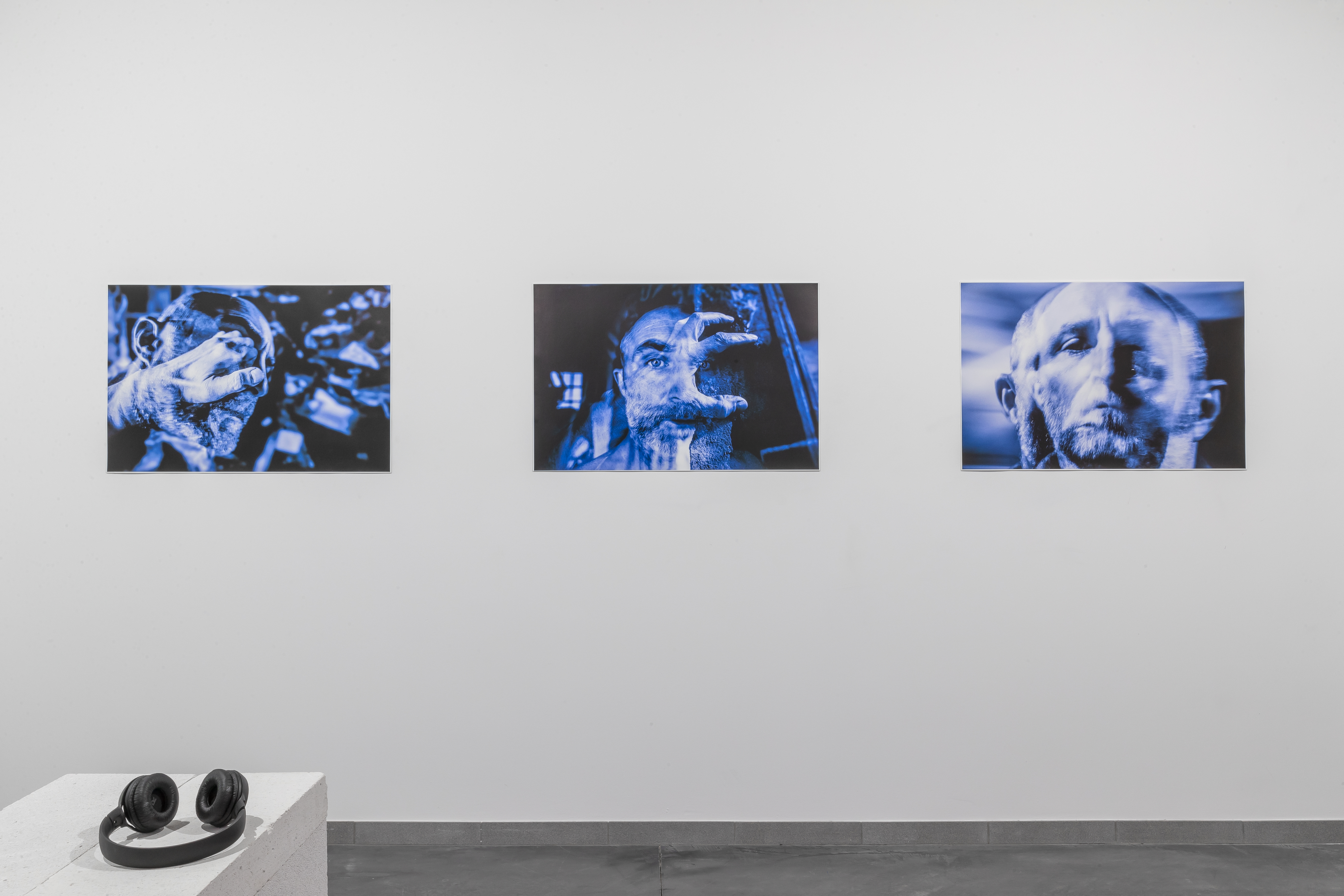

Studio Spaces Espace Berthelot
In the exciting and upcoming art quarter in Forest close to the Wiels Museum, the Lee-Bauwens Gallery, la Fondation A, Galila’s P.O.C, Montoro12 and Macdam Gallery as well as Espace Constantin Chariot...and numerous art centres, you will find my studio in the 'Espace Bertholot’.
After having closed my gallery last June, I have dedicated myself to continue doing my research on collaboration of two artists and it’s outcome in this studio. Last year from September to December, Tomasz Madajczak, a Polish Artist who lives in Ireland showed his video installations and photos together with my works in Espace Bertholot. This year I collaborated with Sarah Pinckers in our joint exhibition “La voix de l’Autre”.
Having completed a Diploma in Video Art at the Academie for beendende KunsteAnderlecht and one in monumental sculpture at the Academie des Arts, formerly connected to the Academie Royale de Bruxelles, my focus is to find artists with whom I can enter into a ‘folie a deux’, meaning an other artist who shares the same obsession to create a minimalist and pure exhibition in this beautiful studio.
How Trauma Affects Art
Exhibiton: 2024
Psychoanalysis was born of the question of trauma, which it postulated as the origin of the history of the subject. In psychoanalytic thought, trauma is seen as an “internal foreign body” – a silent wound, a disruption that unsettles the soul and demands to be understood or overcome. Otto Rank once proposed that birth itself is a primary trauma, setting the stage for all subsequent human experiences and encounters with the uncanny unfamiliar (Das Unheimliche-Freud). Over time, the term “trauma” has developed elusive connotations, especially since the concept of traumatic neurosis emerged following the Second World War – a point de capiton in Lacanian terms – a term surrounded by an illusion of consensus where none truly exists or remains out of reach. The works in this exhibition strive to investigate this initial misunderstanding: trauma and traumatic neurosis should not be confused.
Madajczak’s Traumosis emerges from his own dislocations, starting with his migration from Poland to Ireland, a journey that severed him from his native language and homeland. His photographs and video installations capture the physical and emotional upheaval of moving house, amplified by the precariousness of a housing crisis in Ireland. The works juxtapose fragmented self-portraits with images of an abandoned home – once vibrant with life, now reduced to a hollow vessel of financial speculation. The blue tones in his work signify the depths of great despair, while the red embodies the fiery struggle born of trauma, pushing the self toward dissolution. These colours dissolve and rebuild, symbolising the inevitable fragmentation and potential for reconstruction. Through multi-exposed imagery, Madajczak reveals the fragility of time and the emotional residue left by spaces we are forced to abandon. His experimental soundscapes, crafted from handmade instruments and objects dragged across surfaces, evoke the corporeality of loss and the echoes of displacement. While using himself as a metaphor, Madajczak points to the traumatic experiences that reoccur in human everyday life – a death drive that repeatedly disconnects us from nature. Even when our inner boundaries are not being trespassed or exercised to an extent that influences trauma directly, we are surrounded by others who carry its burden.
Leading into Rincolisky’s Gebärmutter, the focus shifts from the personal trauma of Madajczak to representing the trauma of the Other in her artwork, exploring the abiding scars of early childhood. Her installation depicts a video projection of a child’s image onto a water-filled plexiglass container, symbolising the confines of the intrauterine state and the inescapable transmission of maternal jouissance and aggression. Accompanied by poetic narration, her work recounts the story of a young girl born with an ovarian tumour, potentially caused by her mother’s violent outbursts during pregnancy. This physical trauma was compounded by postnatal isolation and repeated hospitalisations, depriving the child of maternal affection and marking her structure as highly vulnerable and paranoid. This was further intensified by the absence of the paternal signifier. In her sound piece, Rincolisky recounts the unspeakable and “real” trauma experienced by the girl, as defined by psychoanalysis, emphasising the intergenerational transmission of pain and the impossibility of escaping the confines of the signifying system.
The artists’ works intersect within confined spaces. Madajczak’s abandoned home reflects entrapment within capitalist systems, where personal histories are erased in favour of profit margins, leaving individuals fragmented, displaced, and isolated. Rincolisky’s plexiglass container encapsulates the confinement of the maternal and the absence of the paternal signifier, where the child must absorb the traumas of the mother while being severed from the father. Both artists use their mediums to navigate the ruptures and fragmentations caused by trauma, whether through personal experience or the vicarious processing of the Other.
Together, they create a dialogue about transition, rupture, and the necessity of reconstruction. Madajczak’s self-portraits speak to the patterns of identity destruction under societal pressures, a traumatic neurosis that drives an endless spiral of self-dissolution, while Rincolisky’s pieces highlight the enduring impact of “real” trauma imprinted from birth. Both investigate the liminal spaces we inhabit – physical and mental – where the fractured soul hovers, suspended between confinement and repetition.

The Voice of the Other
Exhibiton: 2025
The exhibition presents video, sound, and drawing installations by Zizi Rincolisky (Cologne) and Sarah Pinckers (Liège), both (former) students of the Académie Beeldende Kunsten Anderlecht, Brussels, in the Video Art section.
In the video installation Births, a voice repeats “encore” – over and over again – at different volumes and speed, while a child crawls through the darkness of a canal until it finally reaches the light of life. Yet, it is not the voice of a birth cry that reverberates through the constantly changing light of the crater, but an adult voice – neither distinctly male nor female – whose echo resounds against the damp, concrete (Sichtbeton) walls.
This Voice of the Other returns as a whispering hallucination during the ecstatic seizure in The Other Woman, a film based on a dream by Rincolisky.
This voice, which the psychoanalyst Jacques Lacan defines as a partial drive, marks and alters the content of what is spoken, adding a dimension to language that remains impossible to discern. It is the locus of the Other’s enjoyment, its presence nevertheless indispensable to the desiring subject.
Rincolisky and Pinckers’ collaboration explores la chose (Das Ding) – the question of whether it, this third element, evolves from their preliminary dialogue or not, in the confrontation of their works.

